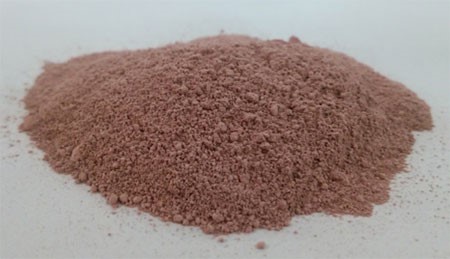December 17, 2018
Shimizu Corporation (Kazuyuki Inoue,President) will soon begin joint construction of a research center in the town of Okinoshima (in Oki-gun, Shimane Prefecture) with Fujii Consulting & Associates, KOBELCO ECO-SOLUTIONS Co., Ltd. and Shinsho Corporation. The research center will extract and manufacture lignophenol, a raw material for bioplastics. It is scheduled for completion in July of next year and the four companies plan to use the facility to establish economical manufacturing technology for lignophenol. They also plan to begin construction of a commercial plant in 2021.
Lignophenol, a raw material for bioplastics, is a new chemical substance developed by Professor Emeritus Funaoka at Mie University in the 1990s. While many biomaterials use food resources as raw material, the chief characteristic of lignophenol is that is can be extracted from low-grade materials such as non-edible wood resources, particularly timber from tree thinning, wood waste, tree bark, and withered pine. In the future, it is expected to become an alternative for petroleum-based plastics that accelerate global warming.
In May 2015, Shimizu received a proposal from Fujii Consulting & Associates on a joint research center aimed at a lignophenol manufacturing plant for practical applications. The company recognized the usefulness of lignophenol early on and had already developed the basic manufacturing technology in 2013. After receiving this proposal, Shimizu began to explore the potential for commercializing the manufacture and sale of lignophenol. A joint research structure was established by the four companies in April 2018 and they proceeded to work on improving the existing manufacturing technology and developing uses. This resulted in the determination that lignophenol had sufficient commercial potential and the decision was made to build a research center aimed commercialization this October.
The research center under construction in the town of Okinoshima is a small lignophenol manufacturing plant that reflects the results achieved in joint research thus far. The consortium is using the plant to manufacture around one ton of lignophenol a year with the aim of establishing commercial manufacturing technology that will be price competitive.
We expect lignophenol to be used as a functional additive in thermoplastics used in vehicles, home electronics, OA equipment, and other devices; in thermosetting plastic used in railway cars, vehicles, electronic devices, and other equipment; in phenol-based adhesives; and plastic foaming agents. Doing so will increase the flame retardancy, strength, rigidity, and workability of plastics. Shimizu intends to pursue entrance into these markets.
≪For Reference≫
Fujii Consulting & Associates
| Location | 1349 Higashitsudacho, Matsue, Shimane Prefecture |
|---|---|
| Capital | 20 million yen (December 2017) |
| President | Shunitsu Fujii |
| Date established | April 1974 |
| Business description | Construction consultant |
KOBELCO ECO-SOLUTIONS Co., Ltd.
| Location | 1-4-78 Wakinohamacho, Chuo-ku, Kobe, Hyogo Prefecture |
|---|---|
| Capital | 6,020 million yen (March 2018) |
| President | Tsuyoshi Kasuya |
| Date established | June 1954 |
| Business description | Business related to water treatment, waste processing, chemical and food machinery, etc. |
Shinsho Corporation
| Location | 6-18, Kitahama 2-Chome, Chuo-ku, Osaka |
|---|---|
| Capital | 5,650.28 million yen (March 2018) |
| President | Takafumi Morichi |
| Date established | November 1946 |
| Business description | Import/export and trading of products such as iron and steel, raw materials, nonferrous metals, machinery, information industry, and welding |
About Lignophenol
Wood material consists three elements: cellulose, hemicellulose, and lignin. Lignophenol is the substance derived by using the technology developed by Professor Emeritus Funaoka at Mie University. It involves using sulfuric acid to stabilize the element lignin at room temperature and separate it from the cellulose and hemicellulose. Lignophenol dissolves well in solvent, is highly compatible with plastic, functions to make plastic stronger and more flame retardant, and results in lighter weight components.
Photo of lignophenol

The information contained in this news release is the current information on the date of publication. Please be aware that this information may have changed by the time you view it. Please contact the company to inquire for further details.
